Little went to waste at Hasith Yaggahavita’s house. Biscuit tins, scrap wire and yogurt cups were often reincarnated, morphing as far as his childhood imagination stretched. Creating a number of interesting fixtures “since I was in grade 7 or 8,” the founder of KidsIgnite calls the home of his boyhood “a very digital house.”
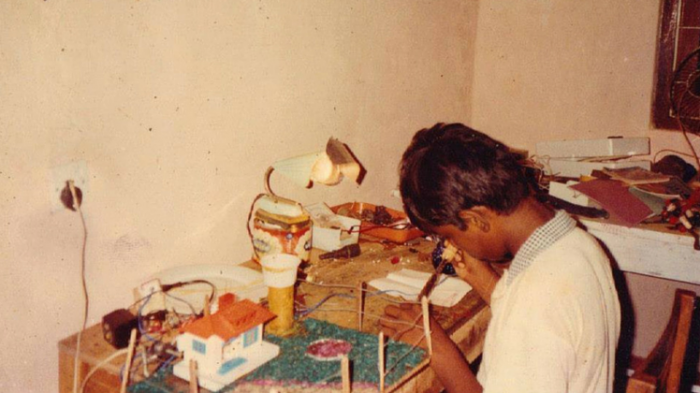
For instance, one could always tell when the Yaggahavita residence’s front door was opened- Hasith recalls wiring it to an alarm. In order to avoid a mad dash of getting dry laundry indoors seconds before the rains came, he fitted their clothesline “with a motor.” When the water tank was at capacity once again a buzzer of his assembling let everyone at home know.
Even more interestingly at a time when telephones hadn’t still become a household item, he created his own version. Complete with underground wiring, “it connected three houses in our neighborhood.” conveniently he laughs, these three were the homes of his friends.
“One smart thing my father did” he feels, was to “send me for a radio mechanics class, at a very young age.” Among peers who were significantly older to him, this class was where 6th grader Hasith picked up technical skills and knowledge which he later free-styled with at home.
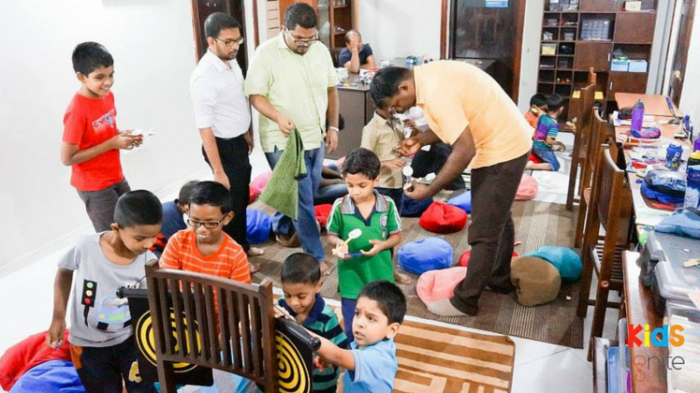
Fast Forward to 2016 and we learn that he’s now actively working to inspire a spark of creativity among today’s youngsters. Every weekend since March this year, Hasith’s living room has been packed with keen kids, busily working on their own creations.
Why Has Hasith’s Living Room Been Taken Over?
It all started when “I was trying to find a computer class and robotics class for my kids” he shares. “There are a lot of computer classes” teaching the usual, word-excel- PowerPoint packages, but “not how to create software or innovate with it.” On the lookout for “almost one year” he hoped to come across a model of teaching which could inspire his two sons “aged 5 and 10” to get imaginative.
“Kids today love technology” we’re told. “Take for example a phone” which at present can even hold up to 100 downloaded games. Children have no trouble picking up a device and spending hours enjoying the game “but they don’t think too much about how the game was made.”
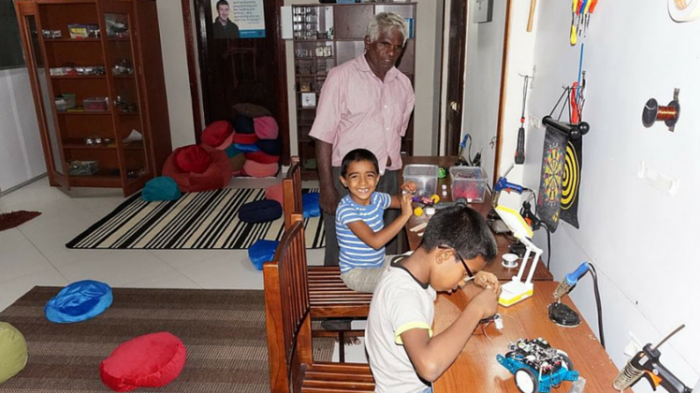
Even with his own boys, requests of “putha, shall we make a three-wheeler today?” or “shall we make a boat today?” have been approached in a very ‘by-the-book’ fashion. “They don’t think of using any materials” they can get their hands on and create from scratch, or use their knowledge in an innovative way.
This in turn he says is pushing Sri Lanka towards the consumer end of the tech spectrum. “We have the brainpower” to be a nation that creates technology for others to consume, but in the rigid structure of education, this ability is lost. “We are taught to follow instructions” in schools and universities, he’s noticed. Thinking back “even I had less time to be creative” as academics progressed.
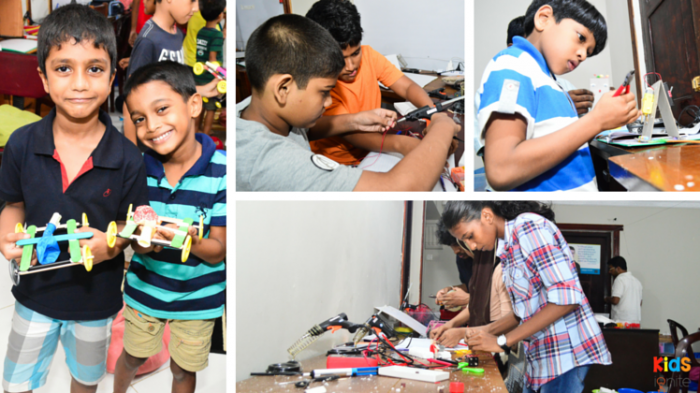
Determined to produce a generation of innovators and inventors, the first step according to Hasith was to create a space where kids are encouraged to be creative with technology. Initially, he planned to mimic ‘maker spaces’ he’s seen in “the US and Europe” during his travel there.
“A maker space,” he explains is, in essence, a space where “not only kids actually, but anyone” can come in and have a go at the available tools or create with the material provided. Ideally, these creative zones stock debris material for the inventors to get creative with. Upon seeing these chrysalises of ideas he remembers thinking “wow, this is cool, I should have this for my kids.”
While setting up this environment for his boys, a friend had simply suggested that he opens it out to other kids as well. Thus, KidsIgnite was born. “I put up a small Facebook post” he smiles and in two weeks accumulated “around 150 entries.” At any given weekend Hasith’s Boralesgamuwa home has 90 kids coming in for 2-hour sessions to unleash their creativity with technology.
How Does KidsIgnite work?
The plan at first was to create only an environment where kids could sign-up as members and thereafter drop in, create and depart at their parents’ convenience “sort of like a gym membership.” But Sri Lanka isn’t ready for that just yet- there are some basics to be taught. Accordingly, KidsIgnite offers a six-month program before one can graduate to be a member of the maker space.
Designing the content for this course has been a challenge according to Hasith who has come up with “around 75” lesson plans for classes across three age groups.
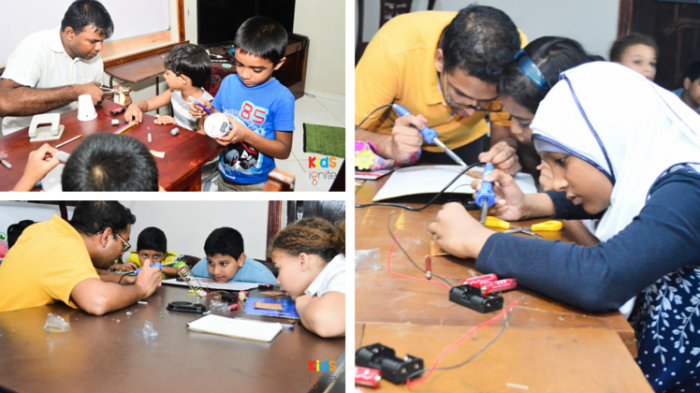
He’s even roped in some of his peers in the IT industry and some engineers to mentor the kids through the creative process. “How we work” is by imparting the idea that “nothing is impossible.” Even if the ideas put forward by the kids are way off of what their assignment for the session is, or they are bound to be unsuccessful with their method, any idea is to be encouraged.
These two-hour slots are rather popular among the children. Some parents have rather cleverly, used the KidsIgnite classes as leverage Hasith laughs, “they say no class if the kids have not done homework.” He’s also noticed an active interest shown by students of both genders.
“Girls tend to finish the task quickly” whereas boys tend to deviate quite a bit, nevertheless with enthusiasm. The enthusiasm is in no short supply he says, and the initiative has outgrown his living-room turned makerspace. “We’re moving into a bigger place in Narahenpita” and currently have a waiting list for enrolment.
Future Plans
The aim of nurturing the potential of the nation in creating marketable technology will only have full effect if this initiative reaches all parts of the island. “I’ve had calls” from as far as Trincomalee he shares, people are interested in starting branches. “I would like to franchise KidsIgnite” and promote the growth of these maker spaces for children in rural areas as well. Ideally, a locally-run creative space by an IT graduate or engineer at village level he feels is the next stage for KidsIgnite.
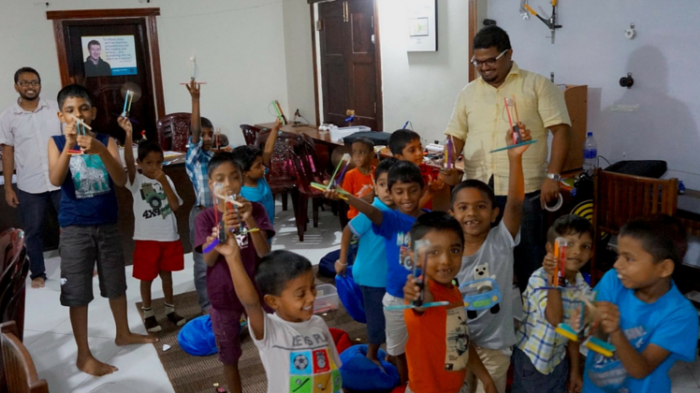
Until then, Hasith and his team of mentors are content with inspiring kids to use what they’re taught. Creativity, after all, can go a long way if channeled correctly. Once outside their maker space, “we want children to spot a problem and try to use technology to solve it.”
If you want to learn more about KidsIgnite, do check out their official website here.




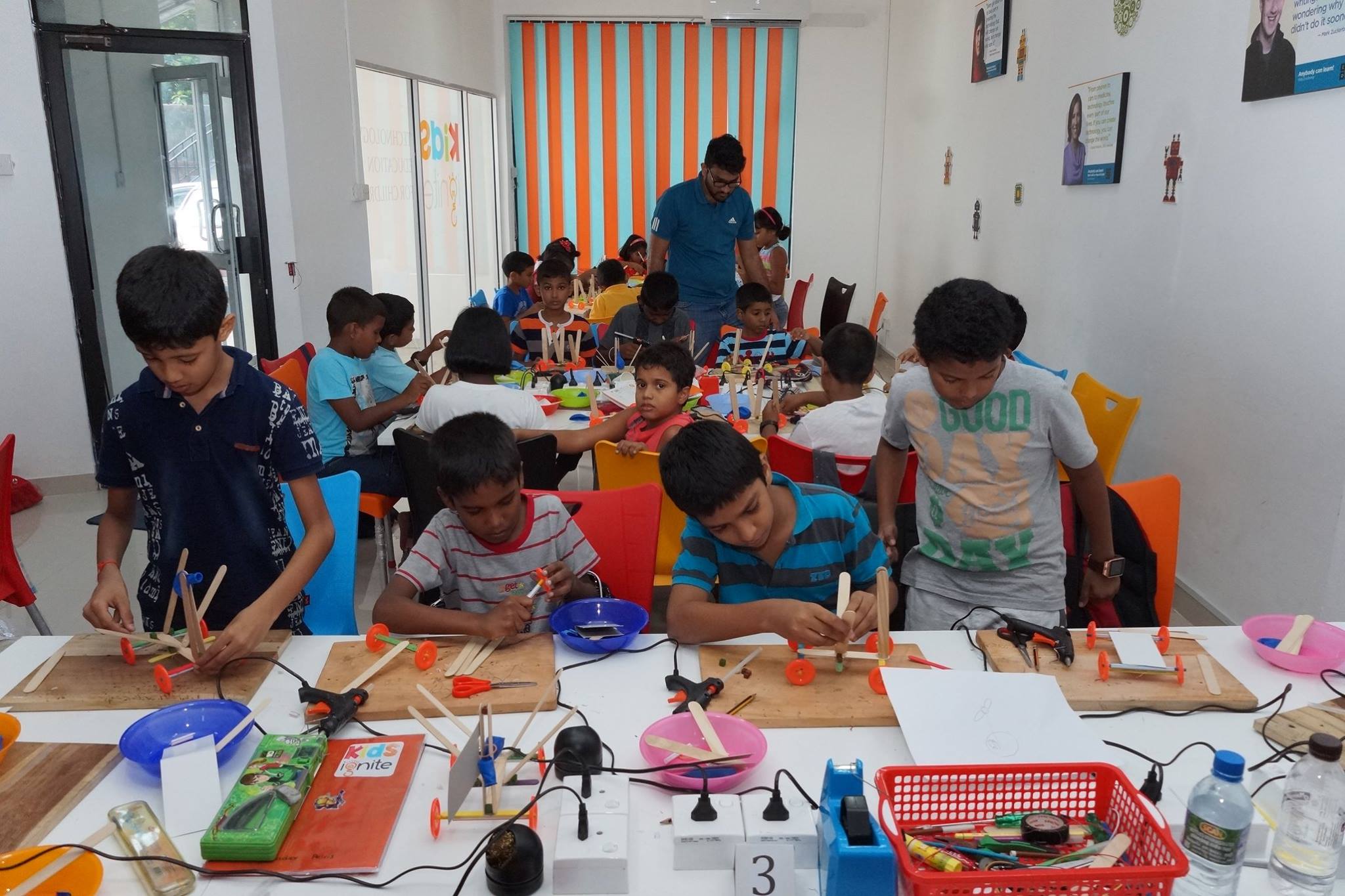


GIPHY App Key not set. Please check settings